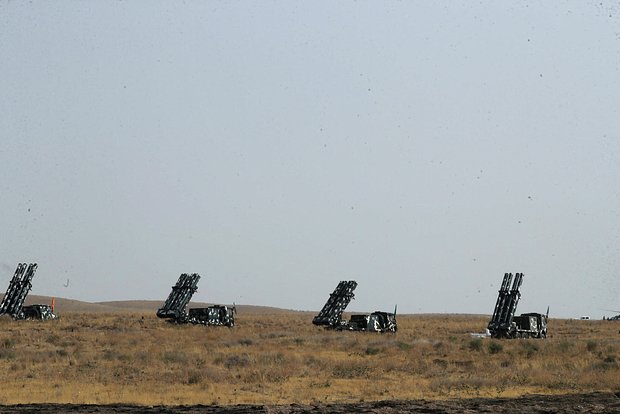Iran has reached a critical milestone that will make it much easier for the country to realise its goal of building hypersonic cruise missiles, resulting in significant progress towards this goal. According to a statement made by Major General Mohammad Reza Ashitaani, who serves as Iran’s Minister of Defence, and which was carried by the “Tasnim” news agency, researchers in Iran have successfully established the technologies required for the production of a supersonic ramjet engine. According to the agency, the engine is currently being used to test a supersonic cruise missile. The engine was designed to be used to develop hypersonic cruise missiles.
The article by Tasnim emphasises the significant advancements that specialists working in the Iranian defence industry have made in developing technology for hypersonic cruise missiles. This most recent innovation represents a big step in advancing ramjet engine technology. The report that Tasnim published lends credence to the veracity of the statement that the Iranian Minister of Defence made. The cruise missile now being tested can achieve velocities greater than two to five times the speed of sound, making it extremely difficult for enemies to counter them successfully.

According to the article, the hypersonic cruise missiles are representative of a new iteration of Iranian cruise missiles and signal the beginning of a new era in the development of these weapons. Continually testing these weapon systems will significantly improve Iran’s ability to defend itself. In the past, Iranian cruise missiles used rocket motors to accomplish initial acceleration. Afterwards, they transitioned to a domestically built jet engine known as “Talou” to maintain sustained flight.
Iran’s capacity to defend itself is anticipated to improve due to its use of supersonic ramjet engines in naval cruise missiles and its development of hypersonic cruise missiles. Because of the implementation of this technology, a wide variety of aerial entities and airborne munitions see a large boost in their respective specific velocities. This category includes missiles, unmanned aerial vehicles, artillery projectiles, and others that functionally fall within this category.
It should be noted that Admiral Ali Reza Tangsiri, the Iranian Revolutionary Guard Navy commander, made a public announcement concerning installing cruise missiles with a range of 2,000 km on Revolutionary Guard vessels in May 2022. In February 2023, commander of the Islamic Revolutionary Guard Corps (IRGC) aerospace forces Amirali Hajizade said Iran had developed a cruise missile with a range of 1,025 miles (1,650 kilometres). Iranian television also broadcast the first footage of the newly christened Paveh cruise missile.
The Iranian Minister Ashitaani also delivered a statement about recent developments in missile technology, focusing notably on significant advances in producing solid-fuel ballistic missiles. The Minister brought a significant doubling of cruise missile production rates and a 45% increase in the manufacturing of defence missiles to the audience’s attention.
Fattah hypersonic ballistic missile
On June 6, Iranian officials presented a demonstration of the Fattah hypersonic ballistic missile, the first weapon of its kind to be manufactured in Iran.
At the rocket’s launch ceremony in Tehran, Iranian President Ibrahim Raisi, Commander of the Islamic Revolutionary Guards Corps (IRGC) Major General Hossein Salami, and Commander of the Aerospace Forces of the IRGC Brigadier General Amir Ali Hajizadeh were in attendance.
During the proceedings, Hajizadeh stated that as a result of these developments, Iran became the fourth nation in the world to be armed with hypersonic technologies.
Ayatollah Ali Khamenei, the Supreme Leader of the Islamic Republic of Iran, was the one who came up with the moniker “Winner” for the rocket.
The missile’s range is 1,400 kilometres, and it was developed by the aerospace forces of the Islamic Revolutionary Guard Corps (IRGC). The missile will have the ability to travel at speeds of up to 15,900 kilometres per hour, will be able to defeat opposing missile defences, and will be able to manoeuvre both inside and outside of the Earth’s atmosphere.
Hajizade announced that Iranian specialists had successfully produced the country’s first hypersonic missile in November 2022. However, at the time, concerns were raised within the Pentagon on whether Iran had succeeded in developing hypersonic weapons. On the other hand, Hajizade reported at the end of May that this missile had accomplished all of the testing with flying colours.

